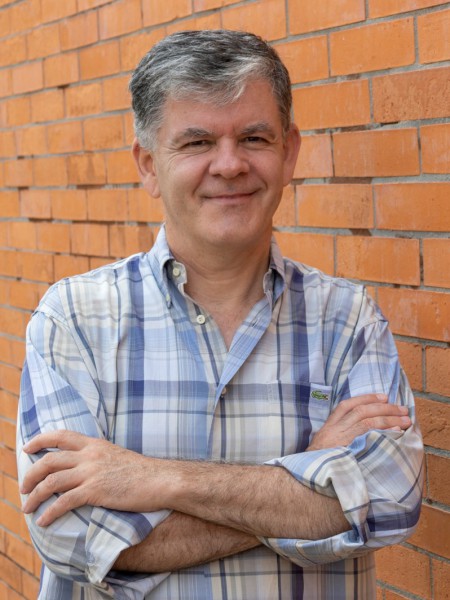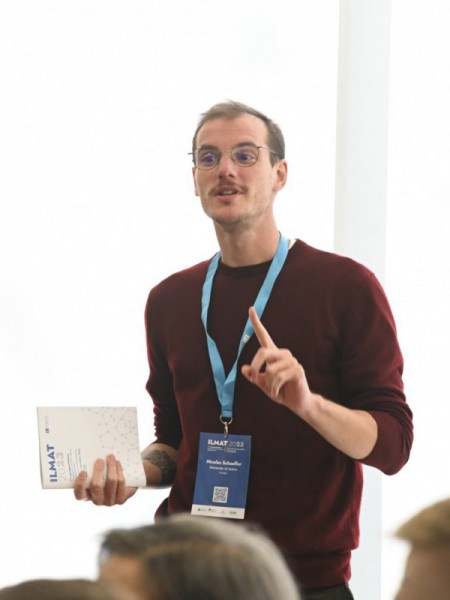resumo
The economic advantages of H2SO4 make it the acid of choice for the hydrometallurgical treatment of waste lithium-ion batteries (LIBs). However, to facilitate the full dissolution of the higher valency metal oxides present in the cathode black mass, a suitable reducing agent is required. Herein, the application of industrial black liquor (BL) obtained from the Kraft pulping for papermaking is investigated as a renewable reducing agent for the enhanced leaching of transition metals from LIB powder with H2SO4. The addition of acidified BL to H2SO4 significantly improved the leaching efficiency for a range of LIB cathode chemistries, with the strongest effect observed for manganese-rich active material. Focusing on NMC111 (LiMnxCoyNizO2) material, a linear correlation between the BL concentration and the leaching yield of Mn was obtained, with the best overall leaching efficiencies being achieved for 2.0 mol L-1 H2SO4 and 50 vol % of BL at 353 K. A quasi-total degradation of oxygenated and aromatic groups from the BL during NMC111 dissolution was observed after leaching, suggesting that these chemical groups are essential for LIB reduction. Finally, the leached transition metals could be easily recovered by pH adjustment and oxalic acid addition, closing the resource loop and fostering resource efficiency.
palavras-chave
OXIDATION POTENTIALS; PROCESS OPTIMIZATION; VALUABLE METALS; RECOVERY; ACID; CATHODE; PERFORMANCE; LIGNIN; LINI1/3CO1/3MN1/3O2; SOLUBILITY
categoria
Chemistry; Science & Technology - Other Topics
autores
Carreira, ARF; Nogueira, AFM; Rocha, ILD; Sosa, F; Lopes, AMD; Passos, H; Schaeffer, N; Coutinho, JAP
nossos autores
Projectos
CICECO - Aveiro Institute of Materials (UIDB/50011/2020)
CICECO - Aveiro Institute of Materials (UIDP/50011/2020)
Associated Laboratory CICECO-Aveiro Institute of Materials (LA/P/0006/2020)
agradecimentos
This work was developed within the scope of the project CICECO-Aveiro Institute of Materials, UIDB/50011/2020, UIDP/50011/2020 & LA/P/0006/2020, financed by national funds through the FCT/MEC (PIDDAC). This work was further supported by national funds through FCT/MCTES (PIDDAC): LSRE-LCM, UIDB/50020/2020 (DOI: 10.54499/UIDB/50020/2020) and UIDP/50020/2020 (DOI: 10.54499/UIDP/50020/2020); and ALiCE, LA/P/0045/2020 (DOI: 10.54499/LA/P/0045/2020). Ana R.F. Carreira acknowledges FCT for the Ph.D. grant SFRH/BD/143612/2019. Nicolas Schaeffer acknowledges the national funds (OE), through FCT-Fundacao para a Ciencia e a Tecnologia, in the scope of the framework contract foreseen in the numbers 4, 5, and 6 of the article 23, of the Decree-Law 57/2016, of August 29th, changed by Law57/2017, of July 19th. Andre M. da Costa Lopes acknowledges his research contract funded by the Fundacao para a Ciencia e Tecnologia (FCT) and project CENTRO-04-3559-FSE-000095-Centro Portugal Regional Operational Programme (Centro2020), under the PORTUGAL 2020 Partnership Agreement, through the European Regional Development Fund (ERDF).









